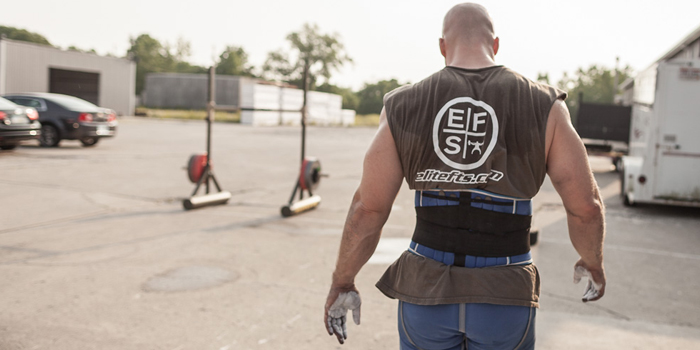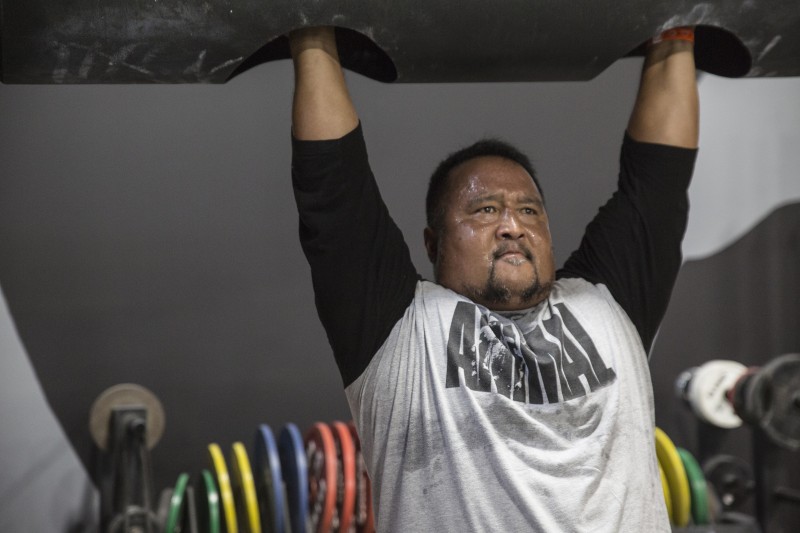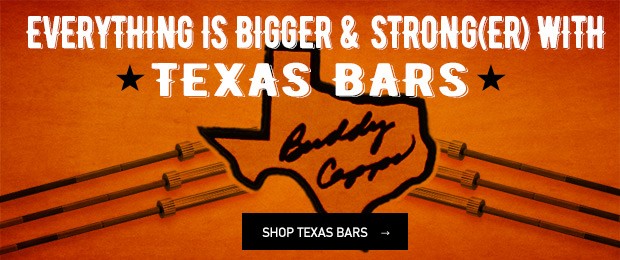
The sumo deadlift may be one of the most underutilized training tools for strongman. It isn’t allowed in competition and can be cumbersome for larger individuals, which can cause issues for strongmen because, in strongman, adding size and weight in order to move objects with greater momentum is a key component of being at the top of your game. However, the sumo deadlift can add tons of strength not only to your regular deadlift but also to your carrying events and your overhead strength. Not only can it add strength, but it can also be a welcome change in movement that will help relieve some of the stress put on your back in such a posterior chain-heavy sport.
Technique is a huge component in the sumo deadlift. If you need some help with that, check out Matt Ladewski's guide to learning the sumo deadlift and the elitefts deadlift manual. I won’t delve into my gripes with deadlifting in strongman here, as they are numerous and could probably take up a whole article, but to say that technique is at the forefront of strongman deadlifting would be a boldfaced lie. Ramping and hitching are legal in competition, so most people train that way. I like to see strength built among strongman competitors focusing on form and technique, and have athletes keep ramping and hitching to be used only as an ace card when it counts.
READ: 7-Step Guide to Learning the Sumo Deadlift
Getting athletes to focus on sumo deadlifts for a few blocks in a training plan not only helps them build massive amounts of strength in a pattern they’re not used to—which carries over to better overall performance come game day—but also really makes them hammer in technique and get to know themselves better. Understanding how your body moves and being able to point out flaws in certain patterns is a crucial component in further developing as an athlete. We fix our weaknesses, not our strengths.
Aside from front squatting, sumo deadlifts are one of my favorite exercises for building a large overhead. This may seem counterintuitive, but if we break down a sumo deadlift, its primary movers and stabilizers, and then look at what is required from a heavy log or axle press, it doesn’t come as a surprise how well sumo carries over. The primary mover for a sumo deadlift is the gluteus maximus, with quadriceps, adductor magnus, and soleus acting as synergists, and the hamstrings and calves acting as dynamic stabilizers. When we take a look at what is involved in triple extension, the primary mover in hip extension is the gluteus maximus, the primary movers in knee extension are the quadriceps, and the primary movers in ankle extension are the calves and soleus. All the primary movers in a push press are covered in a sumo deadlift, under a much higher load, with less stress on the lumbar spine. Couple that with the demand that is put on the lats as a stabilizer in a heavy deadlift and the carryover is tremendous.
The other reason I like the sumo deadlift as a builder for overhead strength and power is the small margin for error. Being able to apply force and power with laser-guided focus is a key aspect of a heavy overhead. As I’ve covered in previous articles, a huge indicator of whether or not someone is going to hit or miss a push press or jerk is whether or not they are able to stay stable in a rack position, keeping that bar path of the implement they are moving straight up and down. If an implement rolls forward or has too much downward momentum on a dip, the extra energy needed to put that implement back on the correct path will usually detract from the ability to make a successful lift. I’m a firm believer that if you dial in technique on one thing, it will carry over to another. Learning how to maintain force and power in a sumo deadlift will carry over to being able to maintain force and power in a push press.
Not only does the sumo deadlift help with carryover in a push press but also in overall athletic development (i.e., running, jumping, explosiveness off the line, etc.). Weak and immobile hips lead to a decrease in sports performance, as well as a host of other issues such as back pain. Developing strong glutes and hip flexors will create more mobility and stability, leading to better times in yoke and farmer runs, better stone loading, and generally any other mobile or loading event.
Think about when you set up and come off the line for a yoke run. Hopefully, your hips are under you, your glutes are contracted, and you’re stabilizing in your hip socket while doing the strongman “waddle” through the run. There isn’t a lot of hip flexion or extension, but there is a lot of stabilization, and strong glutes are a key element in making sure we can stabilize safely and effectively. All too often I see back pain stemming from incorrect loading in a carrying event — and it is usually due to weak glutes. Just think about looking down the line at a group of strongmen and women lining up for the yoke. How many do you see with hips anteriorly tilted with lumbar hyperextension? I’ll bet most of them. Hammering the glutes and learning how to lift a heavy load without the lumbar extension will help tremendously with something like a yoke or farmers carry.
WATCH: Table Talk with Dan Green — Block Pulls and Hip Position in the Sumo Deadlift
Last but not least, the deadlift. For the life of me, I’ll never understand why sumo deadlifts are so vilified, especially in strongman. We don’t do them in competition. Okay. Do we do every lift we utilize in training in competition? I hope not, because either the competitions would go on way too long, or you don’t have a big enough toolbox of strength builders at your disposal. Anyway, back to my gripes about deadlifting in strongman. Way too often, it’s the same thing: grind off the floor, drive the knees under the bar, and ramp that sucker up there, looking like you’re having a seizure the whole way up. I guess that’s okay in competition, but if you’re doing it in training, you’re doing something terribly wrong.
First, let’s look at why you’re doing that. It’s one of two things. Either you’ve never been taught how to deadlift properly and your patterning sucks, or you have relatively weak hamstrings and glutes. That shift is your body’s way of compensating by transferring the load into your quads, and often times into your back (think about the yoke example). Now, instead of our hamstrings, glutes, and abs handling a large portion of the load, your back and quads are grinding through so you can take home that free T-shirt and goody bag of leftover Arnold protein samples.
So, what do we do? We switch out regular deadlifts for sumo, give our backs a break, start hammering those glutes and build some strength with a movement we don’t do often enough. Use the sumo as your main builder, and then hammer your hamstrings and proper hip hinging with accessory exercises like RDLs. If you’re not gearing up for a competition over the next few months, take eight weeks and switch out conventional deadlifting. If it bothers your hips, switch it to every other week. You’ll definitely see results in your athleticism, power in leg drive, and an increase in your deadlift numbers.












1 Comment